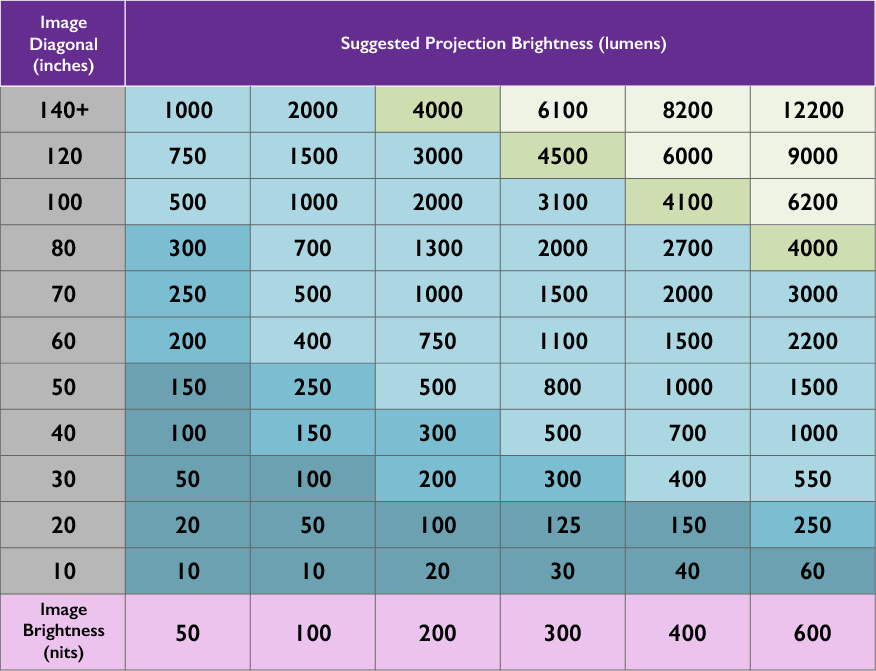
We also tested across different brightness values and found the accuracy held up quite well.
Nits brightness pro#
In our testing, the OnePlus 10 Pro display was very color accurate in every color mode. The phone supports native color management and can adjust the display's color space based on the content, so you should ideally just set it to the Natural mode if you always want the most accurate colors that match the content. Regardless of which color preset you choose, you always have the option of manually adjusting the color temperature, although it's a simple slider without an exact color temperature readout. Pro mode features two sub-options, Cinematic, which sets the display to the Display P3 color space, and Brilliant, which sets the display to its widest native color gamut. Vivid is calibrated to the DCI P3 standard, while Natural is calibrated to the sRGB standard. The display color settings feature three options: Vivid, Natural, and Pro. The lowest brightness we measured was a dim 2 nits.
Nits brightness manual#
With the manual brightness slider, you can expect around 500 nits of peak brightness for SDR content. We measured a maximum of around 780 nits with SDR content, although it should be possible to hit 1300 nits with HDR under the right conditions and a smaller APL. OnePlus claims 1300 nits of peak brightness. This means that the 10 Pro has been color-calibrated at 500 nits, as well as 100 nits for more accurate colors across multiple levels of brightness. Though it's using the same panel as the 9 Pro, the 10 Pro now features "Dual Calibration". The panel features 10-bit color depth and 100% coverage of the sRGB and Display P3 color spaces. It uses second-generation LTPO panel technology and has a dynamic refresh rate that maxes out at 120Hz. If you have a game running at 90 fps and your screen is only 60Hz, you may notice this problem.The OnePlus 10 Pro has a 6.7-inch AMOLED display with 3216x1440 resolution - the same panel from the 9 Pro. With a low refresh rate or a high response time, your screen may not be able to keep up with fast-paced games, which means you'll see problems like ghosting and tearing. A good response time for gaming is 5 ms or less. Response time is the amount of milliseconds it takes for a pixel to change colors. Most laptop screens have the standard 60Hz refresh rate, but some high-end gaming models like the MSI GS63VR come with 120Hz panels, which are better. Measured in hertz, the refresh rate is the number of times per second that the screen updates itself. If you're buying a gaming laptop, you'll want to consider two more factors: refresh rate and response time. While many phones have OLED screens, only two laptops have this technology so far: the Alienware 13 and the Lenovo ThinkPad X1 Yoga. That means that colors are truer and blacks are completely black. While traditional screens have a backlight that illuminates all the pixels, with OLED, each pixel lights itself. The most colorful type of screen you can get is one that uses OLED (Organic Light Emitting Diode) technology. A 72-percent NTSC gamut measurement is equivalent to 100 percent of sRGB. Few manufacturers disclose their screen gamuts on spec sheets, but those that do usually use a wider gamut such as NTSC or Adobe RGB. The best laptops can reproduce over 95 percent of the sRGB gamut, and many exceed 100 percent. At LAPTOP, we measure every laptop's screen's ability to reproduce all the colors in the sRGB gamut, which is a rather limited set of colors.

The more colors your panel can output, the more vibrant it will appear.

The brightest laptops on the market have screens that can reach 300 nits or more, but you can consider any screen with over 250 nits to be above average. Most laptop companies and journalists measure brightness in nits and higher numbers equate to a more luminous screen. MORE: Best 2-in-1s (Laptop/Tablet Hybrids) If you plan to work outdoors or near a window, you need a fairly bright panel to see anything in direct sunlight. Brighter panels usually make colors pop (though they can also be washed out) and lead to wider viewing angles. Though resolution and color quality are more important, having a brighter screen provides a better experience. So, if you don't really need or want a touch screen, don't get one. Glossiness: Almost all touch screens have glossy surfaces that reflect more light back at you, harming viewing angles.

Price: If you're choosing between different configurations of the same laptop, you can expect to pay $100 to $200 more for touch.Power consumption: Most touch screens use a lot more power, leading to fewer hours of battery life on the same notebook.Though it's cool, in theory, to be able to reach across your keyboard and poke at the panel, touch screens have three distinct disadvantages:


 0 kommentar(er)
0 kommentar(er)
